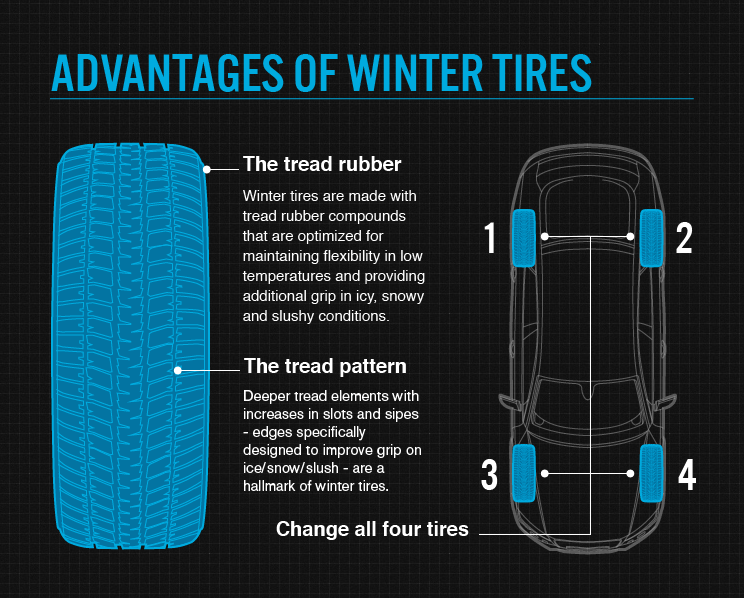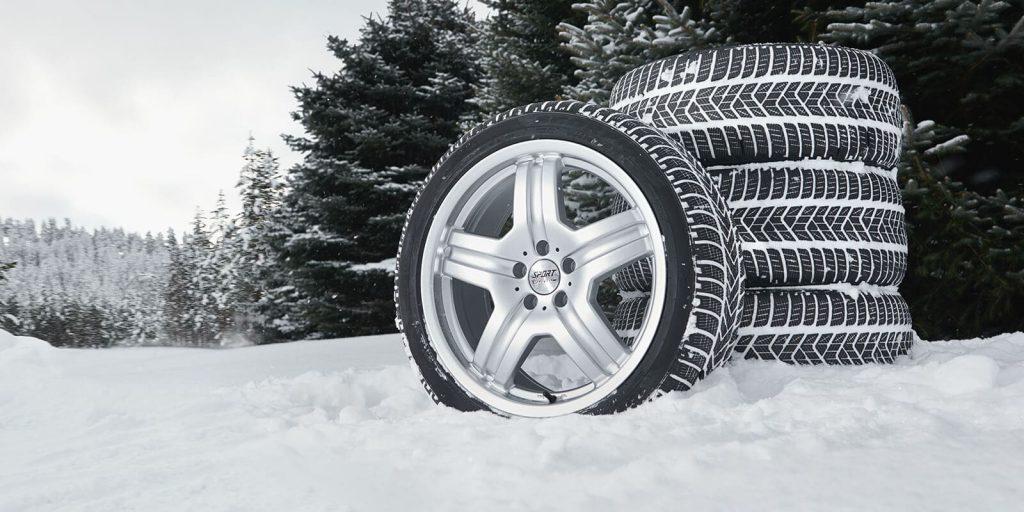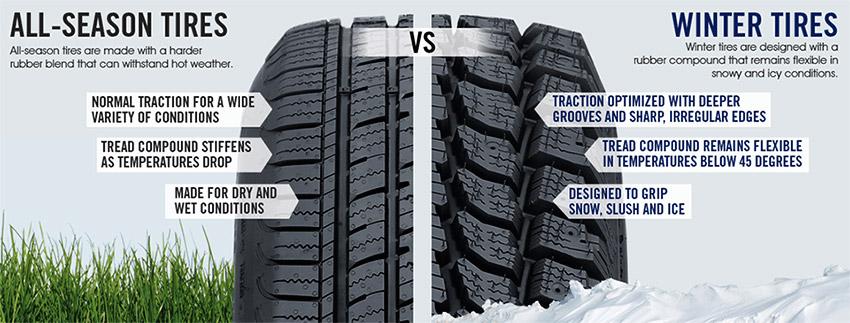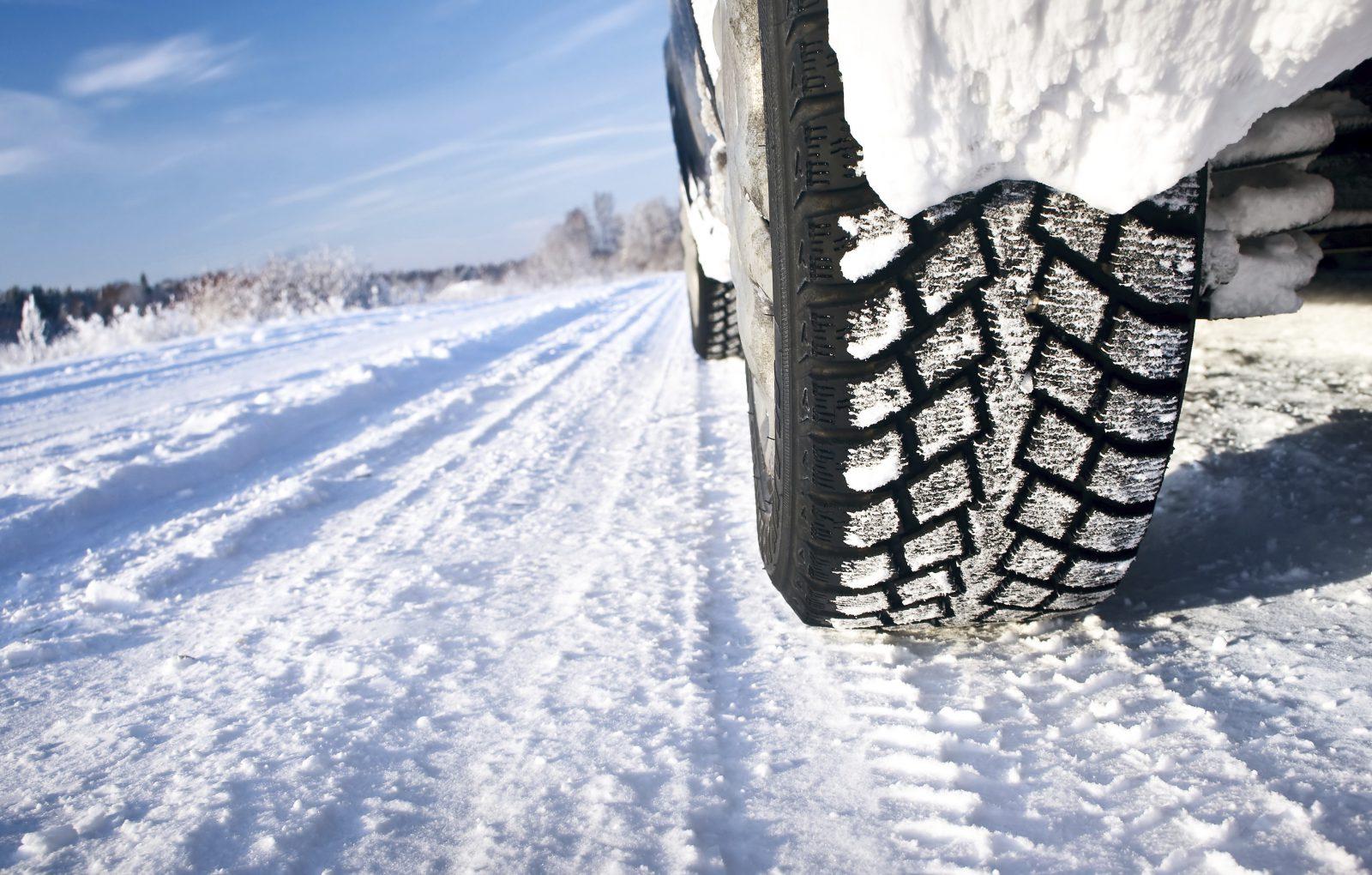Once winter comes, you must decide whether your vehicle needs snow tires. Snow tires for cars are useful during winter when additional traction is necessary. They ensure a firmer grip when driving on a wet or slippery patch. But before you decide right away, get to know about the winter tires.
Contents
What Is A Snow Tire?
Snow tires are different from normal tires because high quality and studs are its main components. Besides, three specific features of winter tires make them unique: tread rubber, tread depth and patterns, and biting edges with thousands of tiny slits in the tread that provide traction on ice.
Winter tires are designed based on a rubber compound to stay flexible in low-temperature conditions. The tire surface has deep grooves to provide optimal traction when traveling in cold weather. Furthermore, snow tires are also equipped with large rubber treads to help the vehicle increase traction, and drive more safely in bad weather conditions such as wet roads, heavy snow, and ice.

Drivers can identify winter tires by the “M+S” or “3PMSF” symbol. In particular, the tire with the symbol “3PMSF – 3 Peak Mountain Snow Flake” has been proven to be safe in tests. This ensures consistent performance of the tire in low ambient temperature conditions in winter.
You can see the picture below to learn more about their purposes.
Pros And Cons Of Snow Tires
Pros of snow tires:
- Better grip: When it’s snowing intensely, there is no alternative to performance winter tires. Winter tires ensure maximum grip in icy or snowy conditions. The combination of hard studs, grippier rubber, and deep treads guarantees maximum traction. During a harsh winter, you can’t depend on anything but snow tires for cars.
- Superior braking: Your ordinary tires are prone to skidding when you brake hard while driving in an adverse condition. However, performance winter tires can dig deep and brake as you want.
- Longer Life For Regular Tires: When you change winter tires for the regular ones, you’re giving regular tires a longer life because they don’t have to suffer from severe conditions which they can’t suffer from. Besides, in the long run, it is a good way to save money.

See more:
Cons of snow tires:
- Tough on roads: The hard and firm grip in snow tires can do significant damage to road asphalt. If you don’t change winter tires when winter is over, it will tear up any road that you drive on.
- Comparatively fragile: Because of their softer rubber, winter tires for cars wear out quickly than regular tires. Also, using them in a normal condition will ruin the tread forever. So, unless you need to, use all-season tires for durability.
- Poor Handling: In comparison to all-season tires, snow tires don’t offer precise handling. You have to be more careful when you are driving with winter tires on.
You should know that all-wheel drive (AWD) or four-wheel drive (4WD) vehicles provide better traction for acceleration but do not significantly improve braking or cornering on icy or snowy surfaces. Snow tires are designed to enhance grip regardless of the type of drivetrain your vehicle has.
FAQs About Snow Tires
Should I install snow tires or all-season tires?
Choosing what type of tire you should install depends on where you live and the conditions in which you drive. The majority of all-season tires are actually made for moderate climates and are not useful in ice or snow. Some of them are suitable for extreme cold, icy, and snowy conditions in the winter months. However, if you have to drive in real winter weather with icy roads, installing snow tires isn’t an over–the–top precaution – it’s a vital safety measure that could save your life and your car.

Should I mix and match tires?
The answer is no. The best thing to do is to install four winter tires, two on the front and two on the rear. Mounting only two winter tires can be dangerous to the driver and other passengers. Moreover, read driving knowledge from our experts to know more maintenance tips for your car in the winter.
When to use snow tires?
It is recommended that you install winter tires once you can see your breath in the daytime when temperatures consistently drop below 45 degrees Fahrenheit (7 degrees Celsius) or when you anticipate driving on snowy or icy roads. After the article about the pros and cons of snow tires, it is apparent that you need to know when it’s time for winter tires or regular tires. Keep track of forthcoming weather developments, and only switch to snow tires for cars when necessary.
Watch more:
Choosing quality snow tires
Review websites like TireRack, ConsumerReports, and AmericasTire are dependable sources of knowledge about snow tire ratings. Professional and customer opinions on these sites should give you an exact idea. Tire Rack’s Rogers said: “The best winter tires are offered by Bridgestone, Michelin and Continental… Some of the other brands don’t offer nearly the same performance.”




Snow tires are a big help during the winter season. It makes driving on the snowy road manageable and smooth. Seek advice from the experts on what kind of winter tires to use for your car.